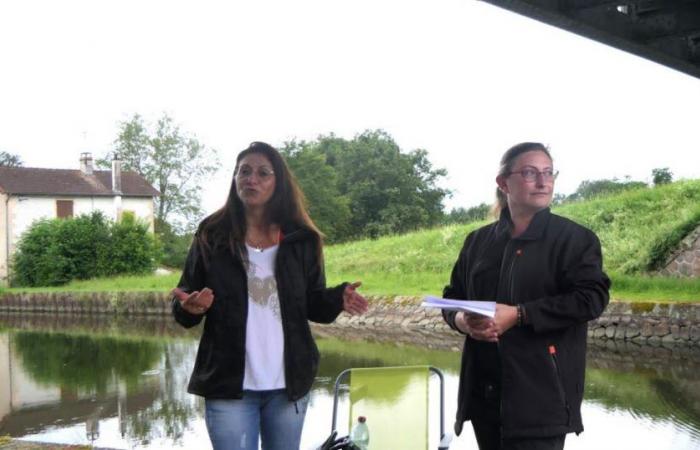Near lock no. 7 of Bourg-le-Comte, Saturday June 22 afternoon, heavy rain disrupted the group who came to learn about the issues and assets of the canals, on the occasion of Heritage Day of countries and mills, placed under the theme “Water useful to all”. But Carine Seillé, project manager at the Roanne canal association in Digoin, its president Jean-Claude Ducarre and Nathalie Descotes, municipal councilor of Bourg-le-Comte, were still able to promote this still too little-known heritage.
This canal from Roanne to Digoin is a lateral canal, which means that this artificial watercourse was built next to a river, the Loire, because it did not allow regular and comfortable navigation all year round. . There are two other types of canals: canalized river beds and junction canals between two waterways.
Tourist today
The canal is supplied from Roanne at a rate of 2 to 3 m3 per second. It has happened that this supply has been reduced when problems have arisen: drought reducing the volume of water from the Loire necessary for cooling the nuclear power plants upstream, excessive flooding, or even work necessary to repair the canal, as was the case. the case this last month.
The slight difference in altitude between Roanne and Digoin has made it possible to limit the number of locks to 10, with an average drop of 3 meters. The highest is lock no. 7 at Bourg-le-Comte, with 7.19 m.
If the canal allowed, in the 19th centurye and 20e century, to transport heavy materials and ores, including coal, at low prices, its function today is essentially tourist.
The environmental qualities of this waterway are obvious: very low energy consumption, irrigation function, maintenance of the diversity of fauna and flora.




